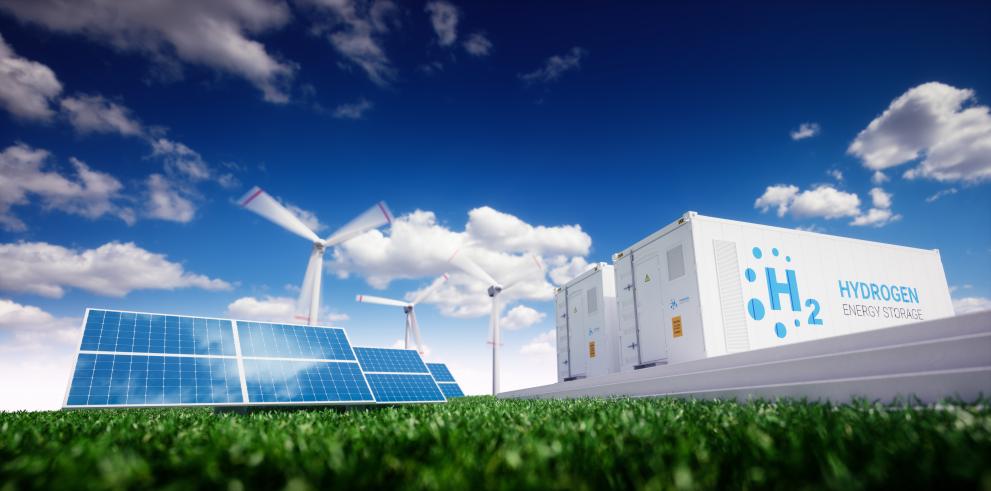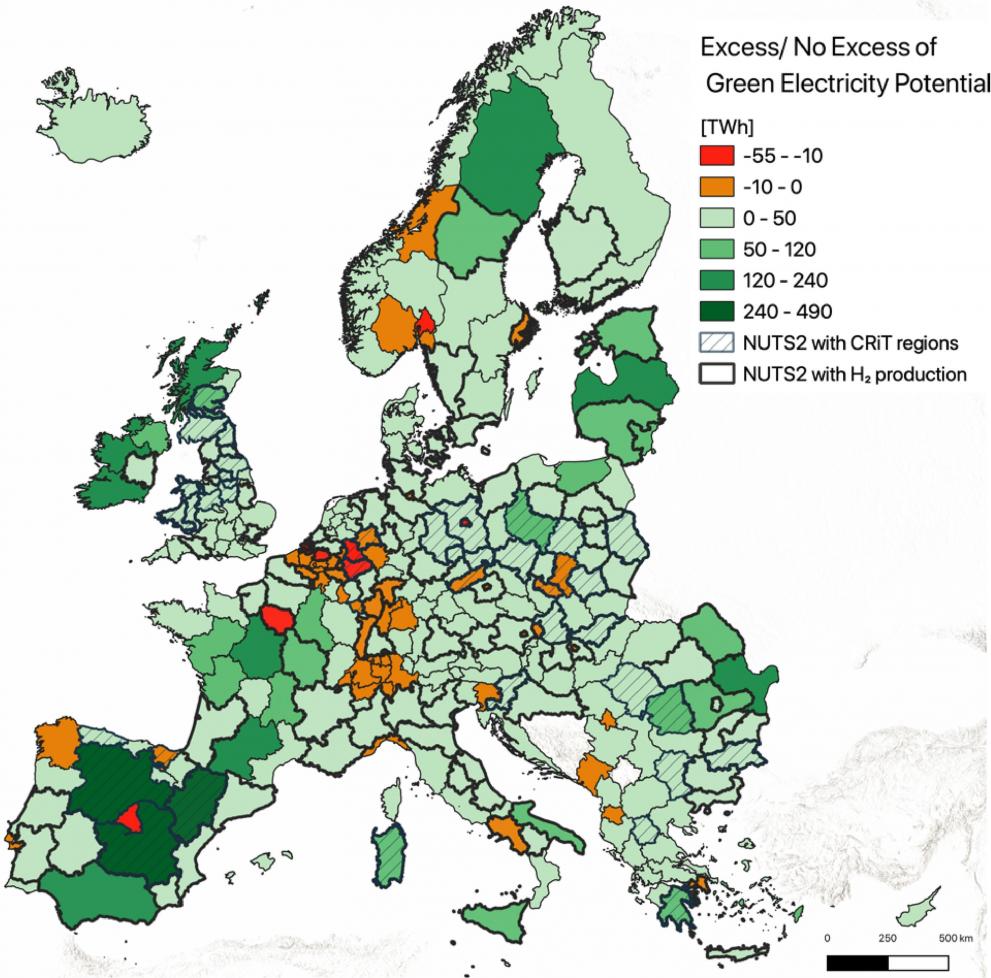
JRC scientists examined to what extent the currently carbon-intensive hydrogen production in Europe could be replaced by water electrolysis using electricity from renewable energy resources (RES) such as solar photovoltaic, onshore/offshore wind and hydropower (green hydrogen).
The findings show that 88 out of 109 hydrogen-producing regions in the EU27 and the UK have abundant renewables resources and could cover both their current electricity needs and the additional power demand for hydrogen electrolysis.
Currently over 95% of our hydrogen is produced from fossil fuels (natural gas and coal) using processes that release greenhouse gases (grey hydrogen). The new EU Hydrogen Strategy will give a boost to clean hydrogen production in Europe in order to decarbonise the energy system, and in particular some "hard-to-reach" industry and transport sectors.
The study, recently published in the Energy Conversion and Management journal, assesses the technical potential of RES at regional and national levels considering environmental constraints, land use limitations and various techno-economic parameters.
It estimates localised clean hydrogen production and examines the capacity to replace carbon-intensive hydrogen hubs with ones that use RES-based water electrolysis.
Findings reveal that -at national level- the available RES electricity potential exceeds the total electricity demand and the part for hydrogen production from electrolysis in all analysed countries.
At regional level, from the 109 regions associated with hydrogen production (EU27 and UK), 88 regions (81%) show an excess of potential RES generation after covering the annual electricity demand across all sectors and hydrogen production. Notably, 84 regions have over 50% excess RES electricity potential after covering the total electricity demand and that for water electrolysis.
The energy technology with the largest technical potential (e.g. ground or rooftop solar, onshore or offshore wind) changes between regions and depends on local conditions.
The study provides evidence on the option to decarbonize hydrogen production at regional level. It shows that such transformation is possible and compatible with the ongoing transition towards carbon–neutral power systems in the EU. Overall, this work aims to serve as a tool for designing hydrogen strategies in harmony with renewable energy policies.
Particular attention was given to EU coal-dependent regions in line with the Coal Regions in Transition (CriT) initiative.
Technical potentials
- Switching the georeferenced industries with hydrogen or ammonia production in 109 regions (6.63 Mt) would require 290 TWh of electricity (about 10% of current production). The available technical potential for producing green electricity from wind, solar and hydro is easily sufficient to cover all current electricity consumption as well as this additional demand for green hydrogen, showing that a partial utilisation of prime locations could suffice.
- It was possible to geo-locate approximately 75% of current hydrogen production points to 109 out of the 309 NUTS2 regions in the EU and UK. Of these, 96 have sufficient wind, solar and hydro resources to cover all current electricity consumption as well as to substitute all grey hydrogen to green hydrogen. These regions account for 88% of overall hydrogen production. For the EU27, hydrogen production currently takes place in 82 regions and 76 of these have sufficient solar photovoltaic, wind and hydropower resources to fully decarbonise both electricity consumption and hydrogen production. The remainder could also do so with green electricity imported from neighbouring regions. It is noted that 20 regions out of the 90 regions with an excess of green potential even after subtracting the postulated electrolysis and current electricity demand belong to the coal regions in transition group (CRiT).
- The results are relevant to the design of policies to implement the EU energy transition, in particular in relation to the role for green hydrogen and implications at regional level for deployment of renewable electricity generation capacity.
Further studies
Further studies are recommended to address economic factors such as: detailed techno-economic analysis of regional energy systems with integrated green hydrogen production; possibilities for transmission and storage of green hydrogen across regions and of the impact of growth of hydrogen demand for new applications in industry, transport and for heat (even as petrochemical use declines with increasing decarbonisation). Cost-optimal solutions will vary from region to region across the EU.

Regions with an excess or deficit of technical potential for green electricity after subtracting the current consumption for all sectors and that needed for moving from existing hydrogen production from grey to green. The shaded regions represent the CRiTs and the bold black outlined polygons the NUTS2 with current hydrogen production [Kakoulaki et al 2020].
Figure published in the related journal article
Related Content
Details
- Publication date
- 27 November 2020
